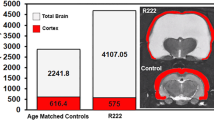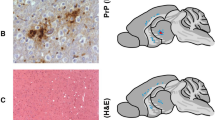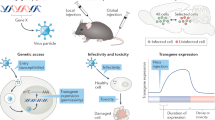Abstract
THE biochemical changes accompanying the multiplication of an animal virus within its host cell are still largely unknown. Alterations in the levels of activity of a variety of enzymes in mouse brain infected with virus have been reported by Bauer1. In this system the number of infected cells is not known and the variety of cell types and possibility of compensatory changes in other neurones make interpretation difficult. Tissue cultures infected with poliovirus show marked changes in various enzyme activities2, but here the considerable variation in physiological state of the culture produced by small experimental variations must be borne in mind when interpreting results. The effects of a virus on the cells of its natural mammalian host can be studied conveniently in the livers of mice infected with large (109–1010 LD50) intravenous inocula of ectromelia virus3. Simultaneous infection of almost all hepatic parenchymal cells takes place, there is no cellular infiltration, and up to 30 hr. after infection there is little or no necrosis. Mouse livers so infected show a progressive increase in size without cell division. The comparison between normal growth in regeneration and that induced by infection, of either normal or regenerating liver, is of some interest. In liver regenerating after partial hepatectomy increase in cell size is followed by cell division, but in regenerating liver infected with ectromelia mitosis is inhibited4. Other evidence for nuclear changes is decreased synthesis5 of coenzyme I and decreased adenosine deaminase activity in both infected and regenerating livers.
This is a preview of subscription content, access via your institution
Access options
Subscribe to this journal
Receive 51 print issues and online access
$199.00 per year
only $3.90 per issue
Buy this article
- Purchase on Springer Link
- Instant access to full article PDF
Prices may be subject to local taxes which are calculated during checkout
Similar content being viewed by others
References
Bauer, D. J., “The Nature of Virus Multiplication”, 46 (Cambridge, 1953).
Kovacs, E., Proc. Soc. Exp. Biol. Med., 92, 183 (1956).
Nossal, G. J. V., and de Burgh, P. M., J. Gen. Microbiol., 10, 345 (1954).
de Burgh, P. M., and Miller, J. F. A. P., Nature, 175, 550 (1955). Miller, J. F. A. P., and de Burgh, P. M., Aust. J. Exp. Biol. Med. Sci., 35, 115 (1957).
de Burgh, P. M., Aust. J. Sci., 20, 86 (1957).
Richert, D. A., and Westerfeld, W. W., J. Biol. Chem., 227, 533 (1957).
de Duve, C., Pressman, B. C., Gianetto, R., Wattiau, R., and Applemans, F., Biochem. J., 60, 604 (1955).
Author information
Authors and Affiliations
Rights and permissions
About this article
Cite this article
NELSON, D., DE BURGH, P. Biochemical Changes in Virus-infected and Regenerating House Liver. Nature 182, 1617–1618 (1958). https://doi.org/10.1038/1821617b0
Issue Date:
DOI: https://doi.org/10.1038/1821617b0
Comments
By submitting a comment you agree to abide by our Terms and Community Guidelines. If you find something abusive or that does not comply with our terms or guidelines please flag it as inappropriate.



